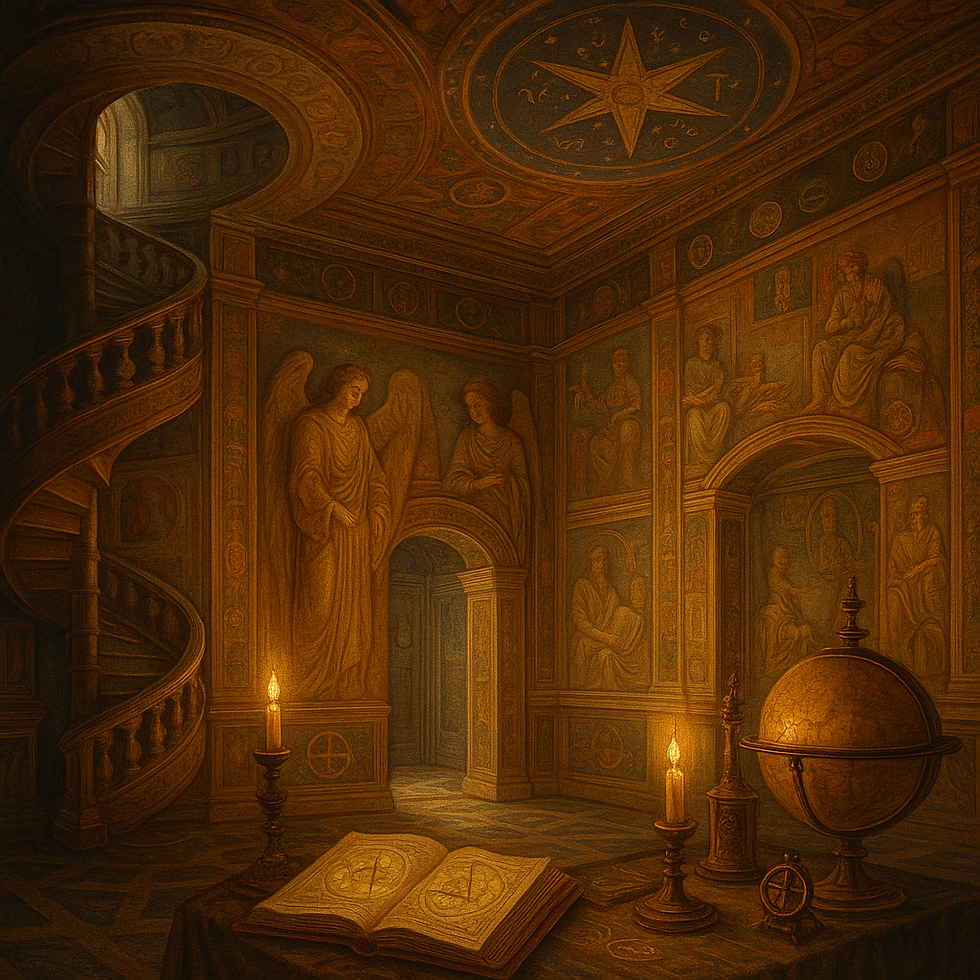🜲 Orsini: Alchemy, Passions, and Ghosts in the Gardens of Mystery
- Giano di Vico

- Jun 23
- 2 min read
Symbols carved in stone, lost loves, and forgotten pyramids
Vicino Orsini didn’t build a garden.He carved a cry of the soul into rock—monsters, sphinxes, dragons, masks, obelisks, and cryptic inscriptions scattered among untamed greenery.Nothing is symmetrical. Nothing is reassuring. The Sacred Grove of Bomarzo is the opposite of a Renaissance garden. It’s a descent into the subconscious. A shadow theater.
🐉 The Sacred Grove: a hermetic garden of love and death
According to the official story, the garden was created by Pier Francesco Orsini, known as Vicino, in the 16th century after the death of his wife, Giulia Farnese.But for those who understand the language of symbols, the grotesques don’t merely speak of grief. They form an initiatory path.
The sculptures are alchemical archetypes—the dragon, the struggling giants, the open-mouthed ogre’s face—each a trial of the soul, a shape of collective myth.Then come the inscriptions: cryptic phrases, hermetic aphorisms. Some seem to speak to the visitor. Others whisper to the unseen.
Nothing is random. The garden is a spiritual labyrinth, built to disorient, to tear down illusions—and perhaps lead toward revelation.
🏛️ Palazzo Orsini: allegories and echoes
Not far from the grove stands the solemn Palazzo Orsini, seemingly in contrast with the sculptural madness outside.But here too, symbols abound: in ceilings, chambers, and frescoes.The palace reads like a second act: where the garden leads through chaos, the palace restores silence and symmetry—as though Vicino wished to show that balance is earned only after a descent.
Legends speak of nightly apparitions, footsteps in the halls, whispers. Some say Giulia’s spirit wanders the corridors. Others believe Vicino himself never truly left his hidden world.
🔺 The Pyramid of Bomarzo: ancient monument or ritual altar?
Few know of it. Fewer still have seen it.Hidden in a secluded clearing near the garden lies a carved tufa pyramid, with stair-like steps, channels, and cryptic markings.
Some scholars call it an Etruscan-Roman altar, perhaps for funerary rites.Others believe it is an alchemical pyramid, used for mystical rituals tied to death and rebirth.It is astronomically aligned and bears signs linked to Renaissance esotericism.
Did Vicino know of it? Was he inspired by it—or was he its secret guardian?
🕯️ A garden that stares back
In the Sacred Grove, you do not look at the statues.They look at you. They measure you. They challenge or welcome you.To the tourist’s eye, it’s a strange park.To the seeker, it’s a threshold.
Who enters with awareness does not leave unchanged.
✨ Orsini: the heretical gentleman
Vicino Orsini was neither architect nor orthodox mystic.He was a poet, a soldier, an initiate.His medium was stone. His message, perhaps, still waits to be understood.
He did not create a place for pleasure.He shaped a world to cross, a ritual to fulfill, a wound to transform into vision.




Comments